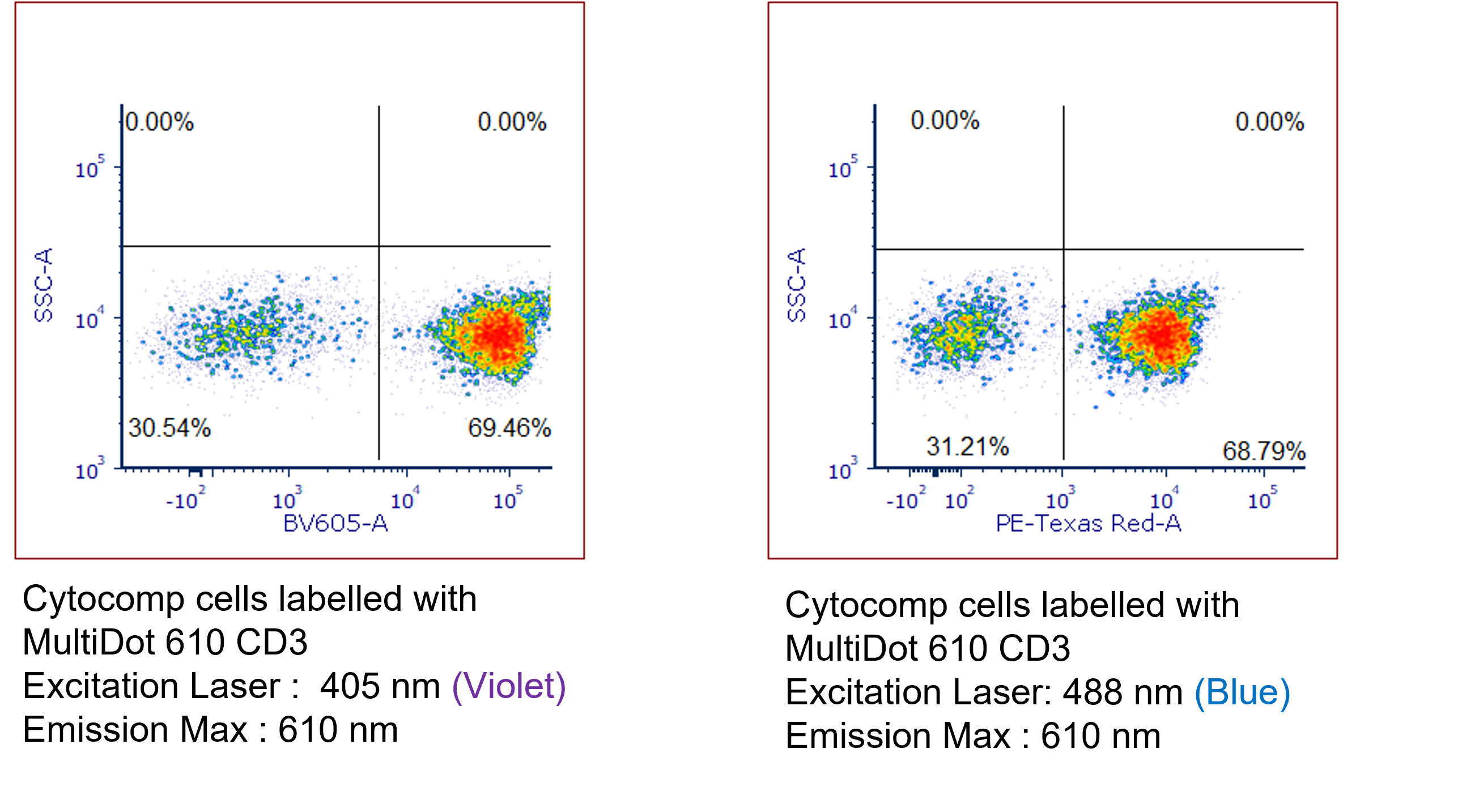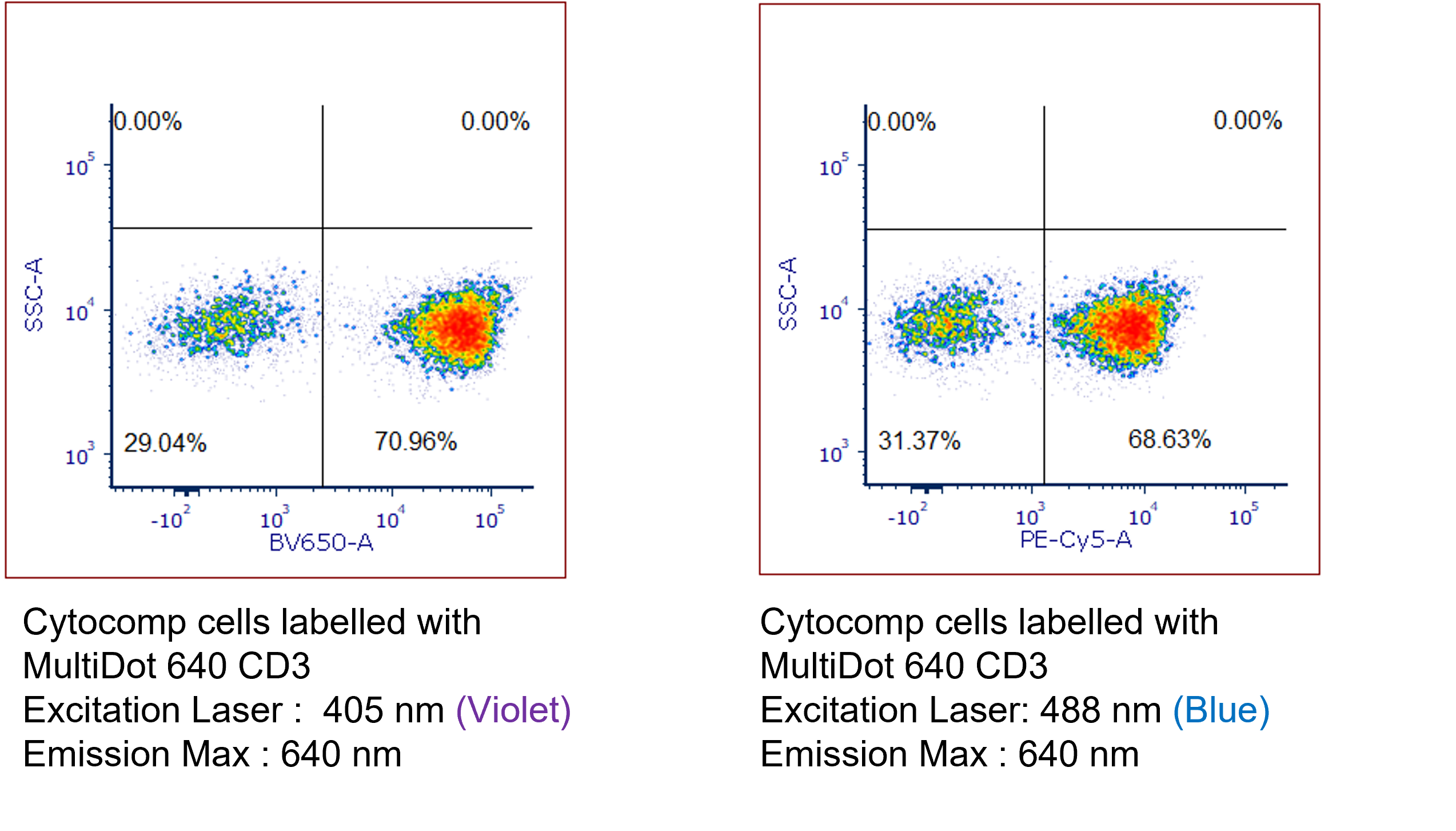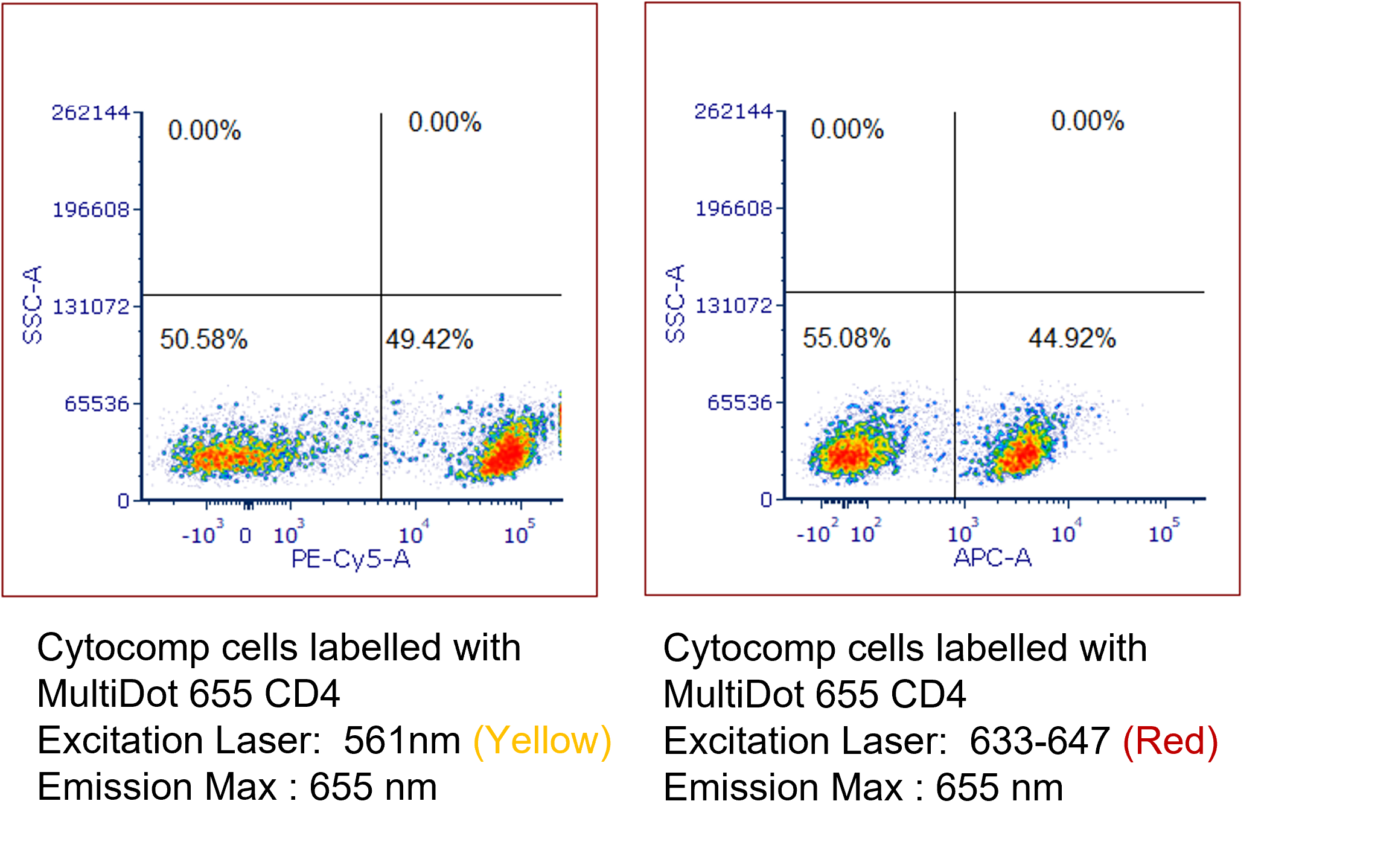Learning and Resources
Flow Cytometry Guide for CQT MultiDots and MagDots
MultiDot 520 conjugates may be excited using violet (405) and blue (488) laser and yields emission maximum at 520 nm.
Example data for Cytocomp cells labelled with MultiDot 520 CD4, captured in AmCyan and FITC channels when analyzed using Becton Dickinson LSRFortessa Flow Cytometer is shown

MultiDot 580 and MagDot 580 conjugates may be excited using violet (405) and blue (488) laser and yields emission maximum at 580 nm.
Example data for Cytocomp cells labelled with MultiDot 580 CD4, captured in Qdot-585 and PE-A channels when analyzed using Becton Dickinson LSR II Flow Cytometer is shown

MultiDot 610 and MagDot 610 conjugates may be excited using violet (405) and blue (488) laser and yields emission maximum at 610 nm.
Example data for Cytocomp cells labelled with MultiDot 610 CD3, captured in BV605 and PE-Texas Red-A channels when analyzed using Becton Dickinson LSRFortessa Flow Cytometer is shown

MultiDot 640 and MagDot 640 conjugates may be excited using violet (405) and blue (488) laser and yields emission maximum at 640 nm.
Example data for Cytocomp cells labelled with MultiDot 640 CD3, captured in BV650 and PE-Cy5 channels when analyzed using Becton Dickinson LSRFortessa Flow Cytometer is shown

MultiDot 655 and MagDot 655 conjugates may be excited using violet (405), blue (488), yellow (561) and red (633) laser and yields emission maximum at 655 nm.
Example data for Cytocomp cells labelled with MultiDot 655 CD4, captured in QDot 655, PerCP, PE-Cy5 and APC channels when analyzed using Becton Dickinson LSR II Flow Cytometer is shown



